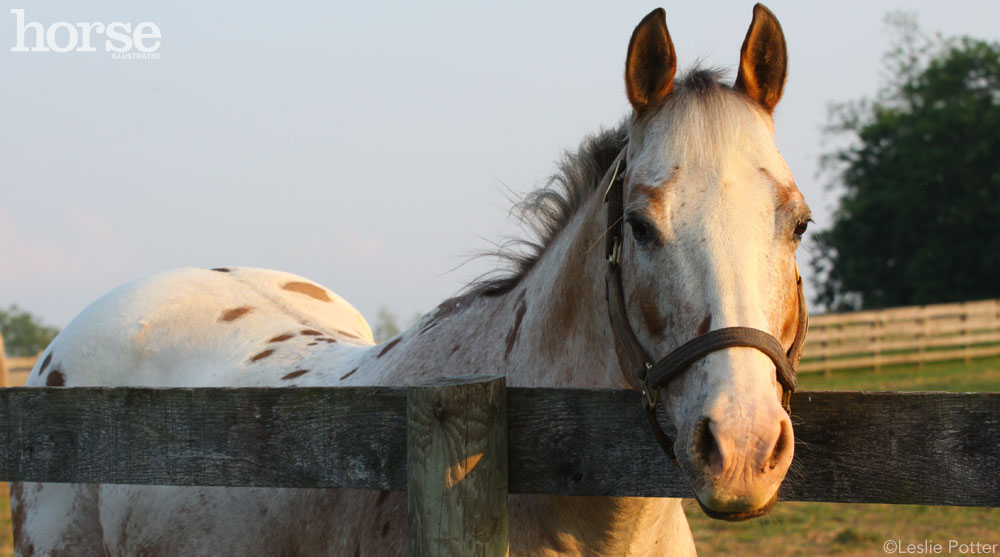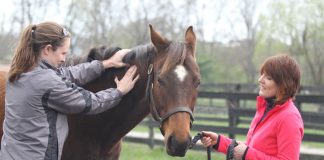

Q: I have a 12-year-old Appaloosa whose feet have been very tender for 5 to 7 days after a trim. This is the first year we kept him barefoot all summer. I was told that it could be due to retracted soles. Is there anything I can do for him after a trim to reduce the tenderness?
A: This was such a great question–deserving of an equally great answer–that I turned to the SmartPak Hoof Health Consultant, Danvers Child, a Certified Journeyman Farrier or CJF for advice. Here’s how he responded:
In many cases, the simplest solution for problems of this nature is to trim less aggressively. Seasonal growth changes and environmental factors play a significant role in both growth and wear rates, so it’s important to monitor the conditions and adjust trimming accordingly. Since you indicate that the problem is occurring immediately after the trim and resolves after five to seven days, my first inclination is to encourage a more conservative trimming approach.
In a “normal,” healthy foot, we expect to see approximately 15-20mm (1/2” to 3/4”) of sole depth. While this depth or thickness is variable, the variation is not attributable to retraction. Although the term “retracted soles” has unfortunately been added to our nomenclature, the fact is that the sole has no mechanism that allows it to retract. It may be diminished or thinned, but it cannot be retracted.
Once the sole has thinned, we have to determine why, and we have to look at options for remediating the problem. There are a number of short-term options available. First among these would be the application of topicals such as Venice turpentine or other toughening/hardening agents. Likewise, we can protect the foot with the application of shoes or boots, and through the use of pads or pour-in materials.
Long-term approaches and solutions are, of course, more desirable, and they require a deeper look at the underlying elements that encourage good sole depth and health. Regular maintenance that is designed to keep the foot “backed up” and under the bony column of the limb is vital. A foot that is allowed to “run forward” will tend to become thin soled. Likewise, exercise and activity encourage and stimulate good vascularity and circulation and promote good sole growth. Basic nutritional concerns play a role as well, and a general assessment of the potential need to supplement and encourage hoof growth.
Ultimately, the reasons for variations in sole depth, especially in relation to the sole being thinned or diminished, are virtually infinite, and some—such as genetic predisposition—are outside of our control. Nevertheless, working with a professional farrier, you should be able to sort through the various options and determine what will work best for your horse and your particular situation.





